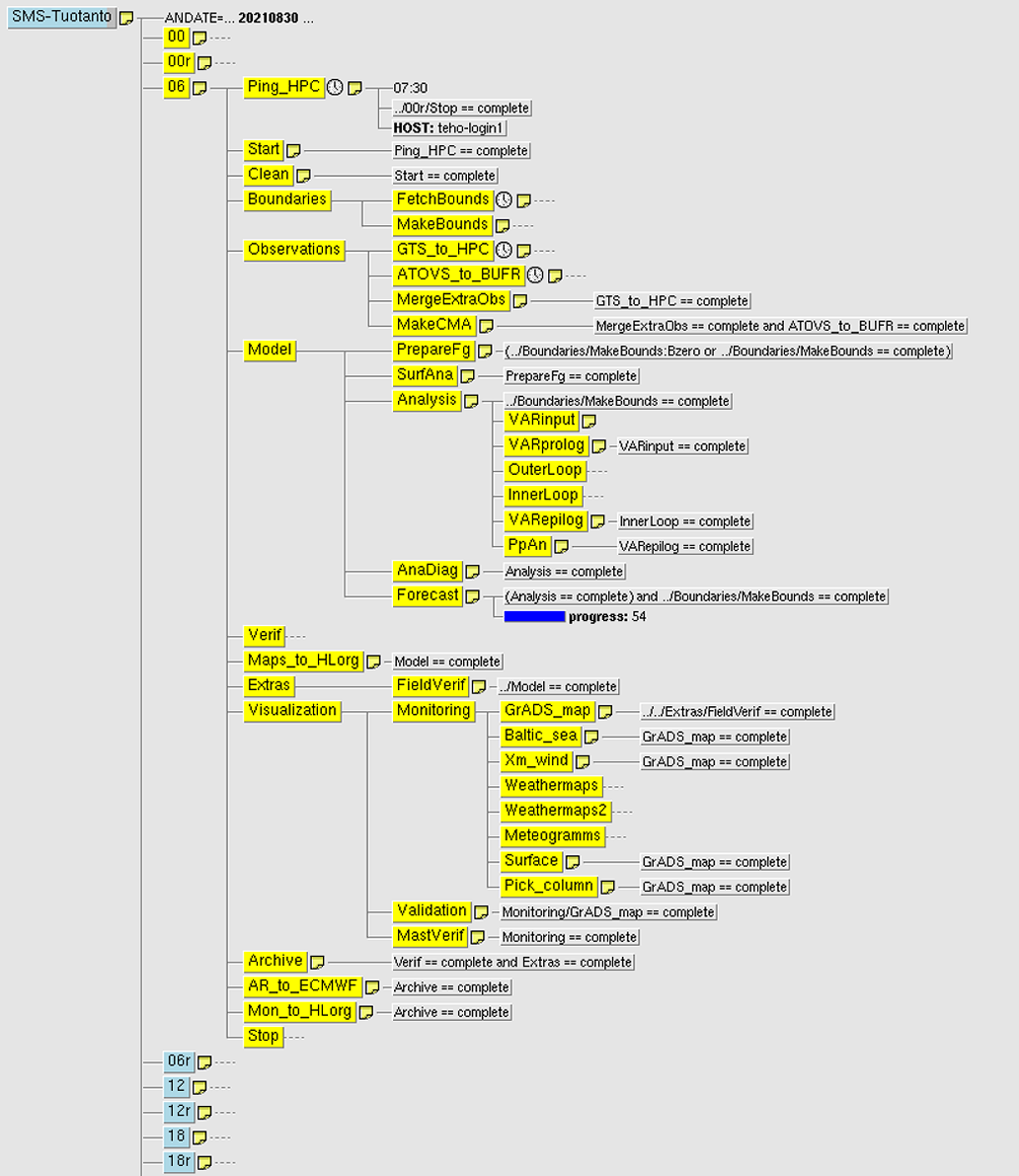The atmosphere within a computer
Weather forecast models mimic the behaviour of the atmosphere by simulating it using mathematical and physical equations. They are not statistical models trying to deduce the atmospheric behaviour based on past weather patterns. One can say that in effect we build a virtual atmosphere within the computer, with all of its physical properties described as accurately as possible.
The mathematical and physical equations describing the atmosphere are so complicated and mutually coupled that it is not possible to solve them exactly through analytical methods. Thus, numerical methods are needed. When solving the equations numerically, the atmosphere is divided into a limited number of discrete points, at which the equations are solved. The distance between the points is called the resolution of the model. A similar discretisation (or split) is also needed with respect to time.
The forecast starts from a known initial state. Using the tendencies obtained from the physical atmospheric equations, the evolution of the atmospheric state during a finite length of time (time step) at each point is then calculated. This new state is then used as the initial state for the next time step and so on, until the desired forecast length has been covered.

The better the resolution of the model, the more accurately the real atmospheric behaviour can be simulated. Resolution is limited by the available computer resources. In the first operational weather models used in the 1950's, the resolution was a few hundreds of kilometres. With the latest supercomputers, we are now approaching resolutions of 1-3 kilometres.
1.9.2021
